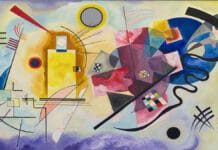Revenge tragedy is a dramatic genre characterised by its focus on a protagonist’s quest for vengeance against those who have wronged them or their loved ones. This genre explores themes of vengeance, justice, and the often violent consequences of personal vendettas.
Revenge tragedy has its roots in classical works, particularly those of Seneca, a Roman playwright. His plays, marked by their themes of bloodthirsty revenge and complex moral questions, heavily influenced Elizabethan dramatists. The genre became popular in England during the late 16th and early 17th centuries. Its rise coincided with the reigns of Elizabeth I and James I, periods marked by political intrigue and social upheaval.
Revenge as a Central Motif
The plot of revenge tragedy revolves around a protagonist seeking revenge for a grave injustice, usually a murder. The central character is typically someone who has been wronged, or whose duty it is to avenge a wrong done to a family member, and who dedicates themselves to seeking retribution. The desire for revenge often leads to a cycle of violence, affecting many characters and leading to multiple deaths by the play’s end. The narrative usually includes intricate plots, with the revenger devising complex schemes to ensure the downfall of the perpetrator.
Moral Ambiguity
Protagonists are often complex characters whose quest for vengeance raises questions about justice and morality. Within the narrative, there is often a philosophical exploration of the ethics of revenge and whether it is justified. The revenger and other characters usually grapple with this moral dilemma. The line between justice and revenge is frequently blurred, challenging the audience to consider the ethical implications of the protagonist’s actions.
Supernatural Elements
Ghosts and supernatural occurrences are typical, often appearing to urge the protagonist toward revenge or to foreshadow impending doom. In many revenge tragedies, the plot is set in motion by the appearance of a ghost who demands vengeance for their wrongful death. These elements add a layer of inevitability and fate, suggesting that the quest for revenge is predestined and unstoppable.
Complex Villains and Conspiracies
The antagonists in revenge tragedies are often portrayed as complex figures. They engage in complex schemes and conspiracies to maintain their power and thwart the protagonist’s efforts. These villains are typically cunning, manipulative, and ruthless in pursuing their interests.
Disguise and Deception
Revenge tragedies frequently employ elements of disguise, deception, and mistaken identities as part of the protagonist’s plan to exact revenge. These devices add to the intrigue and complexity of the plot, creating a sense of uncertainty and tension.
Soliloquies and Monologues
Protagonists often deliver soliloquies and monologues that reveal their inner thoughts, struggles, and motivations. These speeches provide insight into the psychological complexities of the characters and the moral dilemmas they face.
Madness and Feigned Insanity
Absolute or feigned madness is a common element in revenge tragedies, as characters affected by grief or the weight of their vengeful burden might become insane or pretend to be so for strategic reasons. This madness can symbolise the corrupting influence of vengeance and the psychological toll it takes on individuals.
Play Within a Play
To expose or entrap the guilty party, the protagonist might stage a play that mirrors the original crime, hoping to provoke a reaction that reveals their guilt.
Dark and Foreboding Tone
The overall atmosphere of a revenge tragedy is sombre, eerie, and morally ambiguous, with themes such as justice, mortality, and the nature of evil being explored.
Violence and Gore
Revenge tragedies are noted for their explicit depiction of violence, including murder, torture, and mutilation. The graphic nature of these plays reflects the darker aspects of human nature and the consequences of unchecked vengeance.
Tragic Outcomes and Catharsis
Revenge tragedies traditionally culminate in the death of the revengers themselves, as well as other innocent characters caught in the crossfire. This often results in a transfer of power or the restoration of order by new leadership. The tragic outcome provokes a sense of catharsis in the audience as the pent-up emotions and tensions are released.
Notable Examples
The Spanish Tragedy by Thomas Kyd
- Often considered the progenitor of the English revenge tragedy.
- Follows Hieronimo, who seeks revenge for the murder of his son, leading to a climactic and bloody resolution.
Hamlet by William Shakespeare
- One of the most famous examples centres on Prince Hamlet’s quest to avenge his father’s murder.
- Incorporates themes of madness, existentialism, and the moral consequences of revenge.
The revenge tragedy genre has had a lasting impact on literature and popular culture, influencing later works across various media, from novels to films. Its themes of justice, morality, and the consequences of obsessive vengeance continue to resonate with audiences, making it an enduring and compelling form of dramatic storytelling.




























